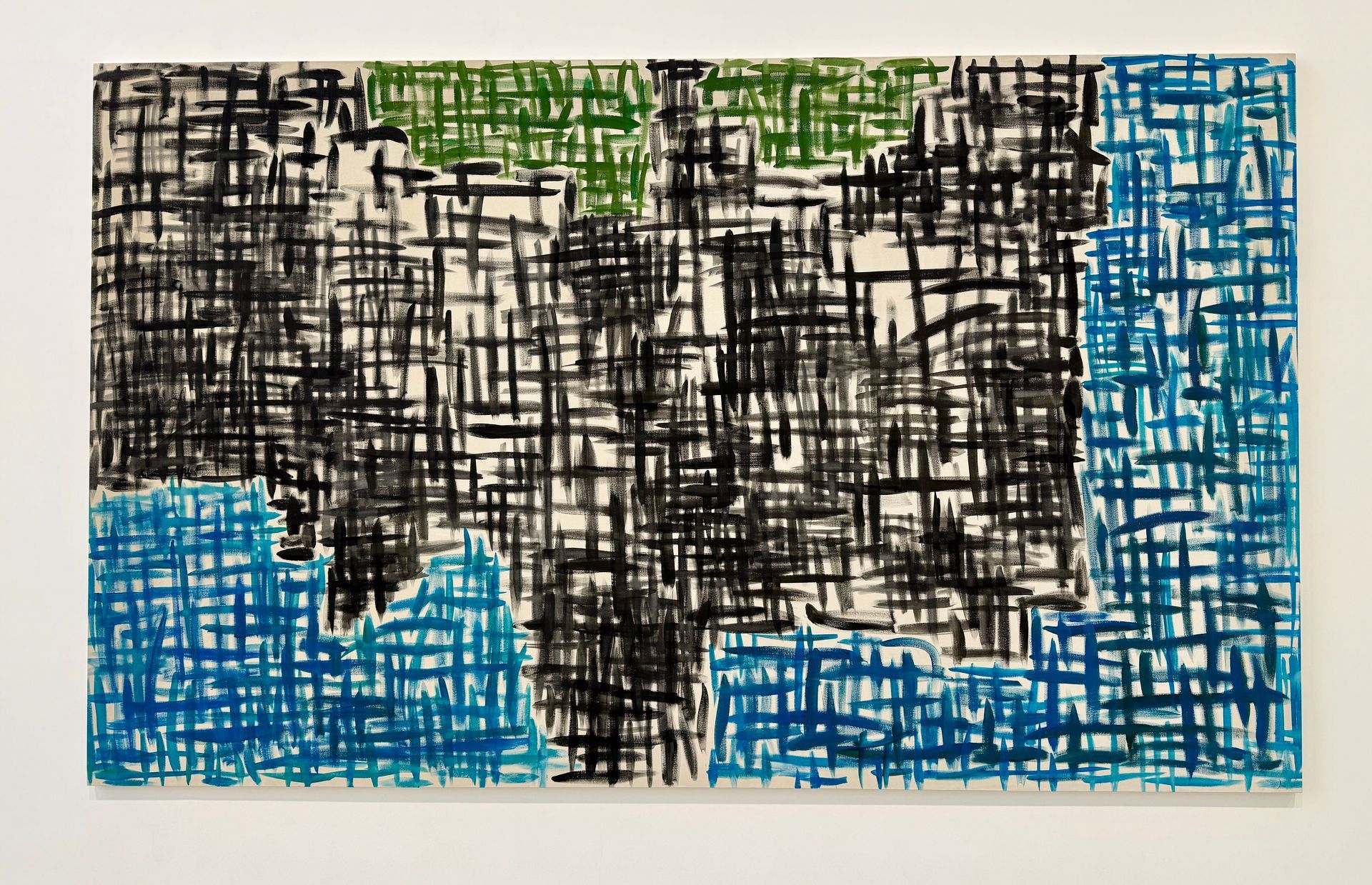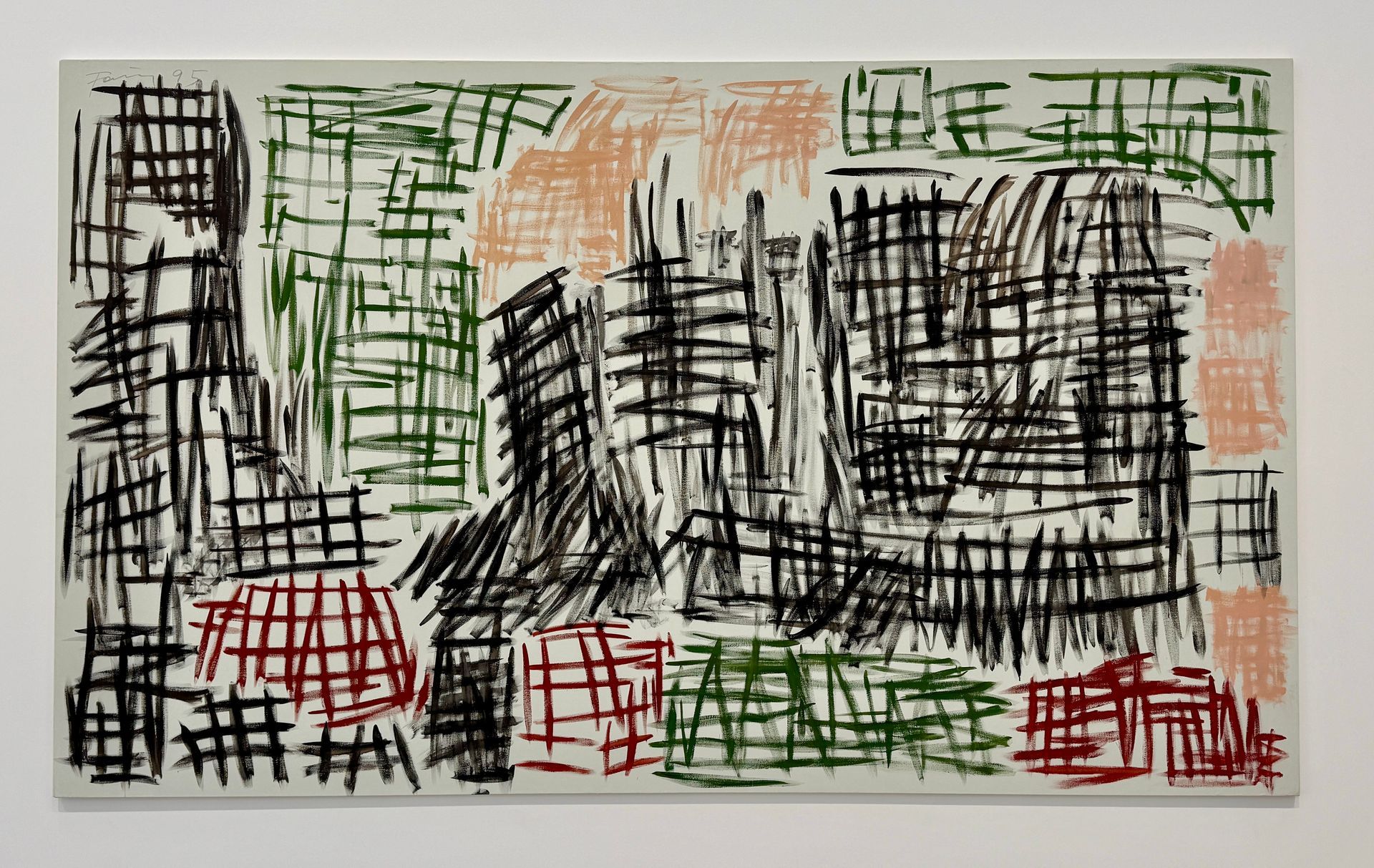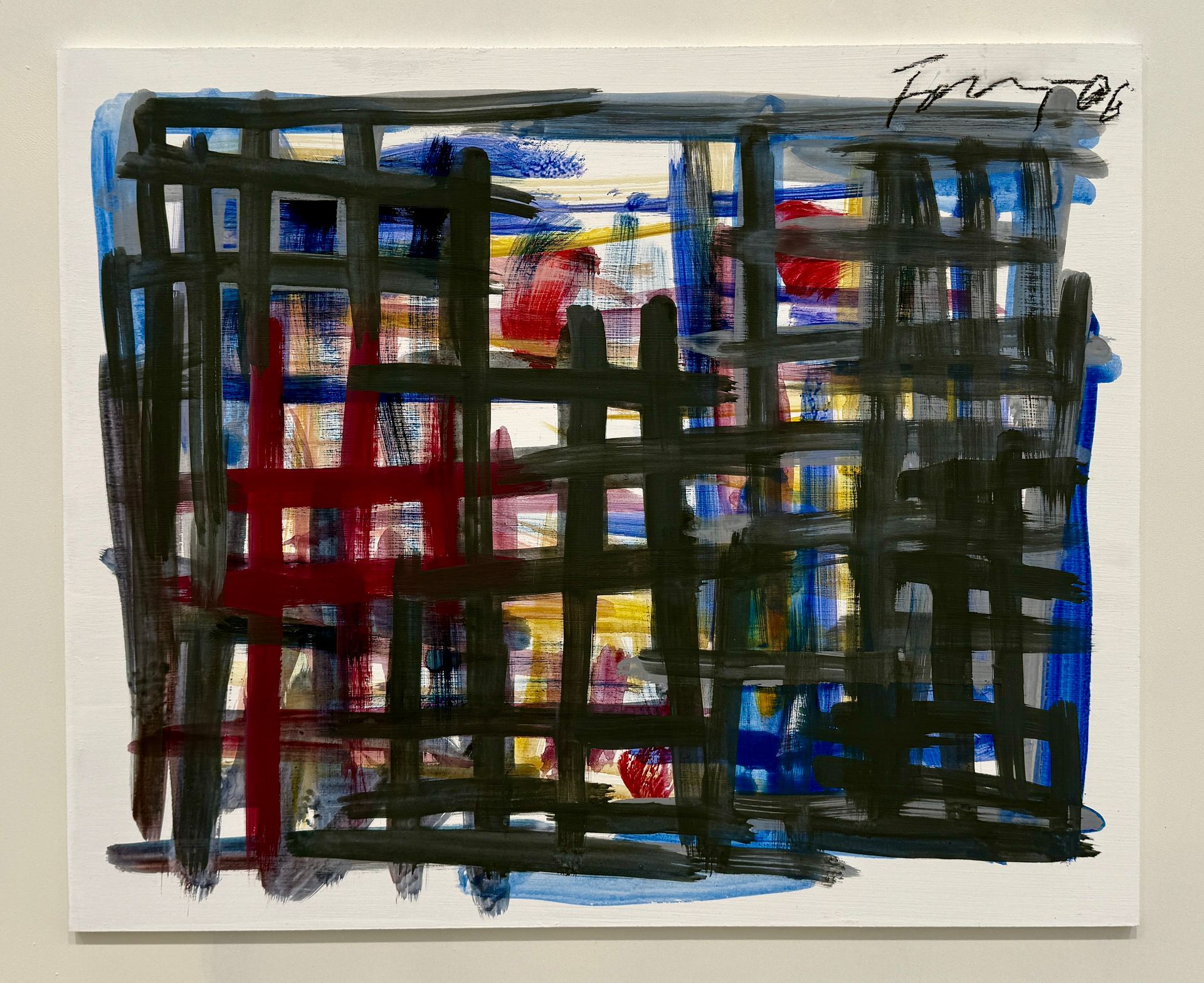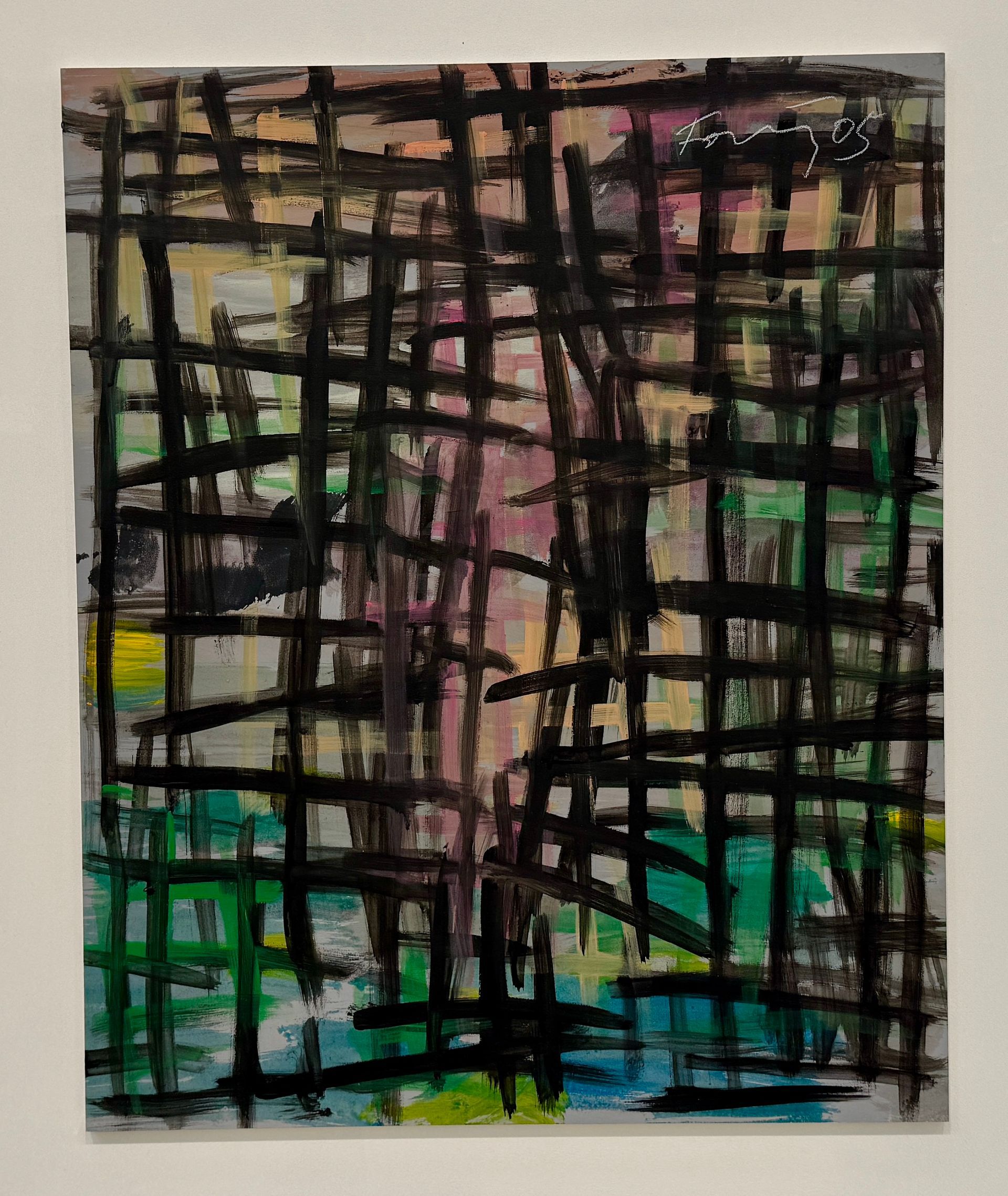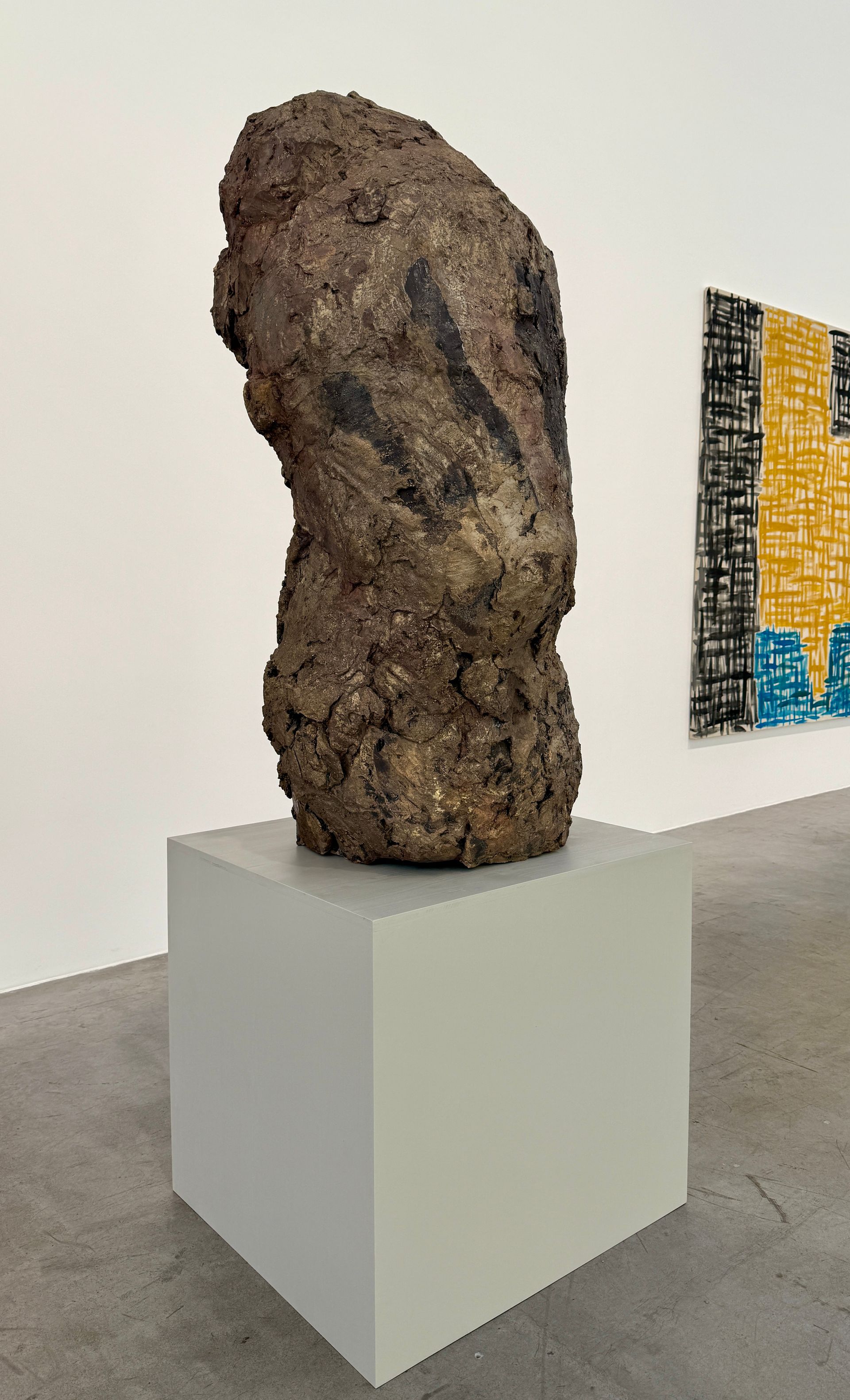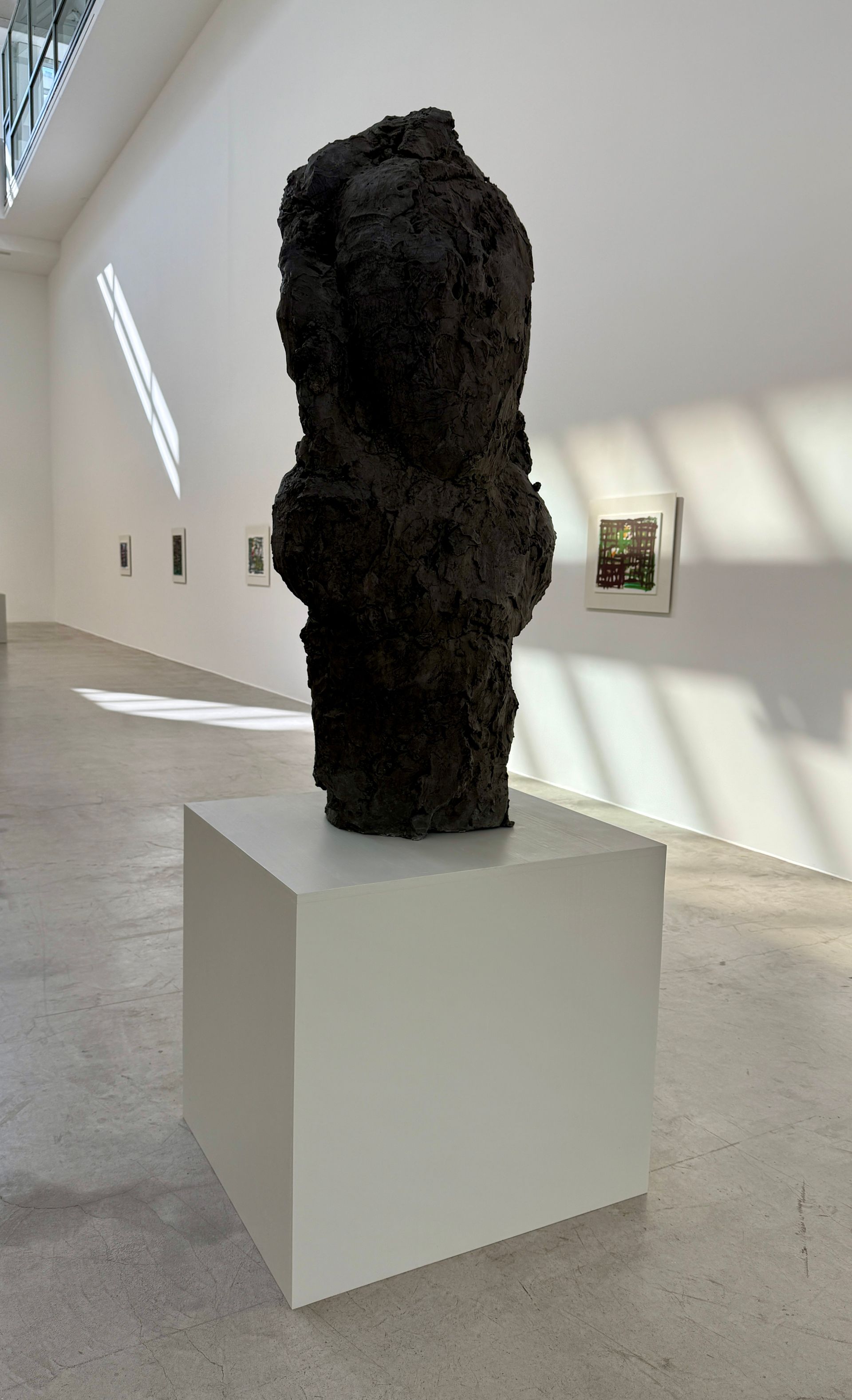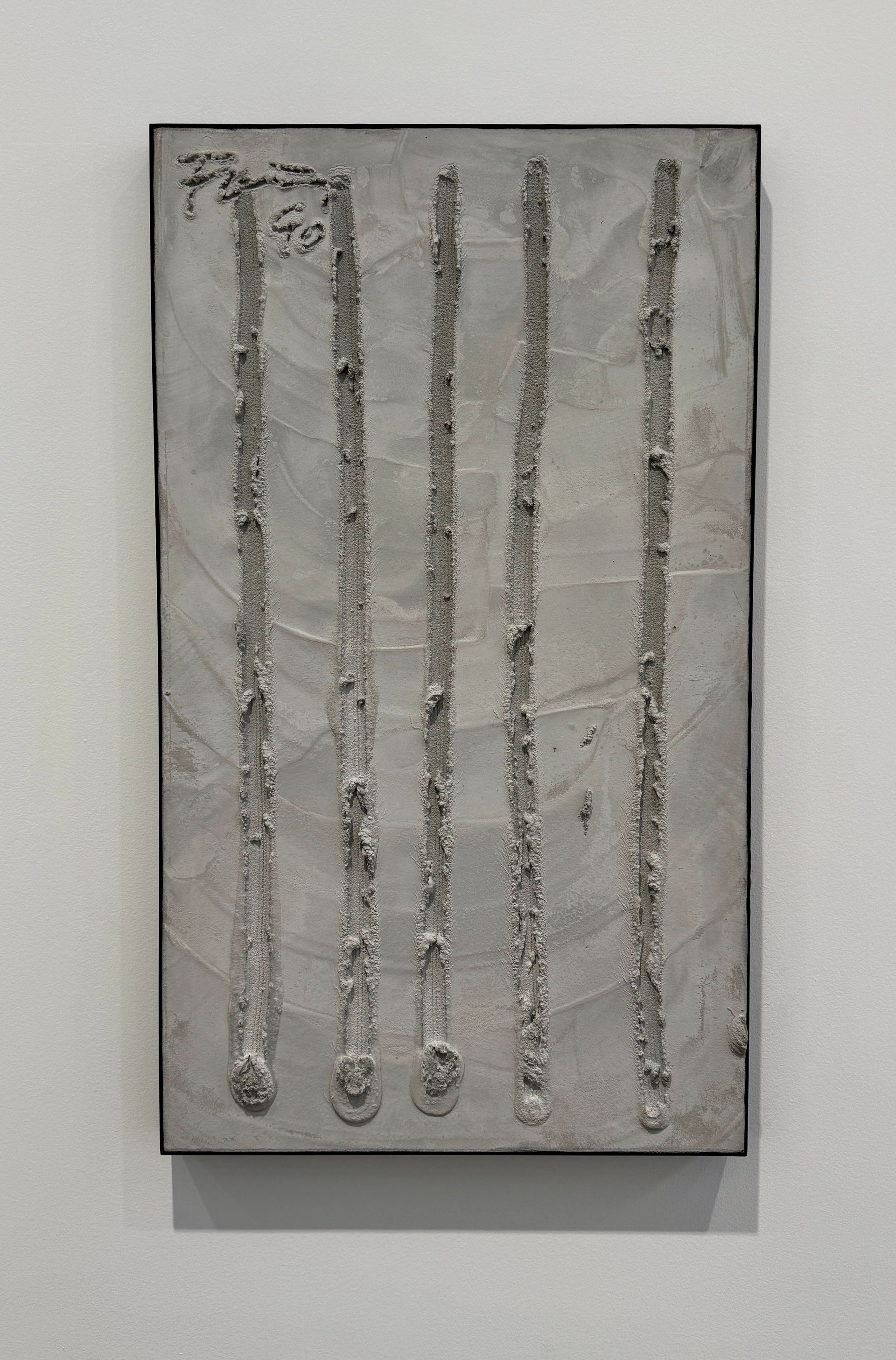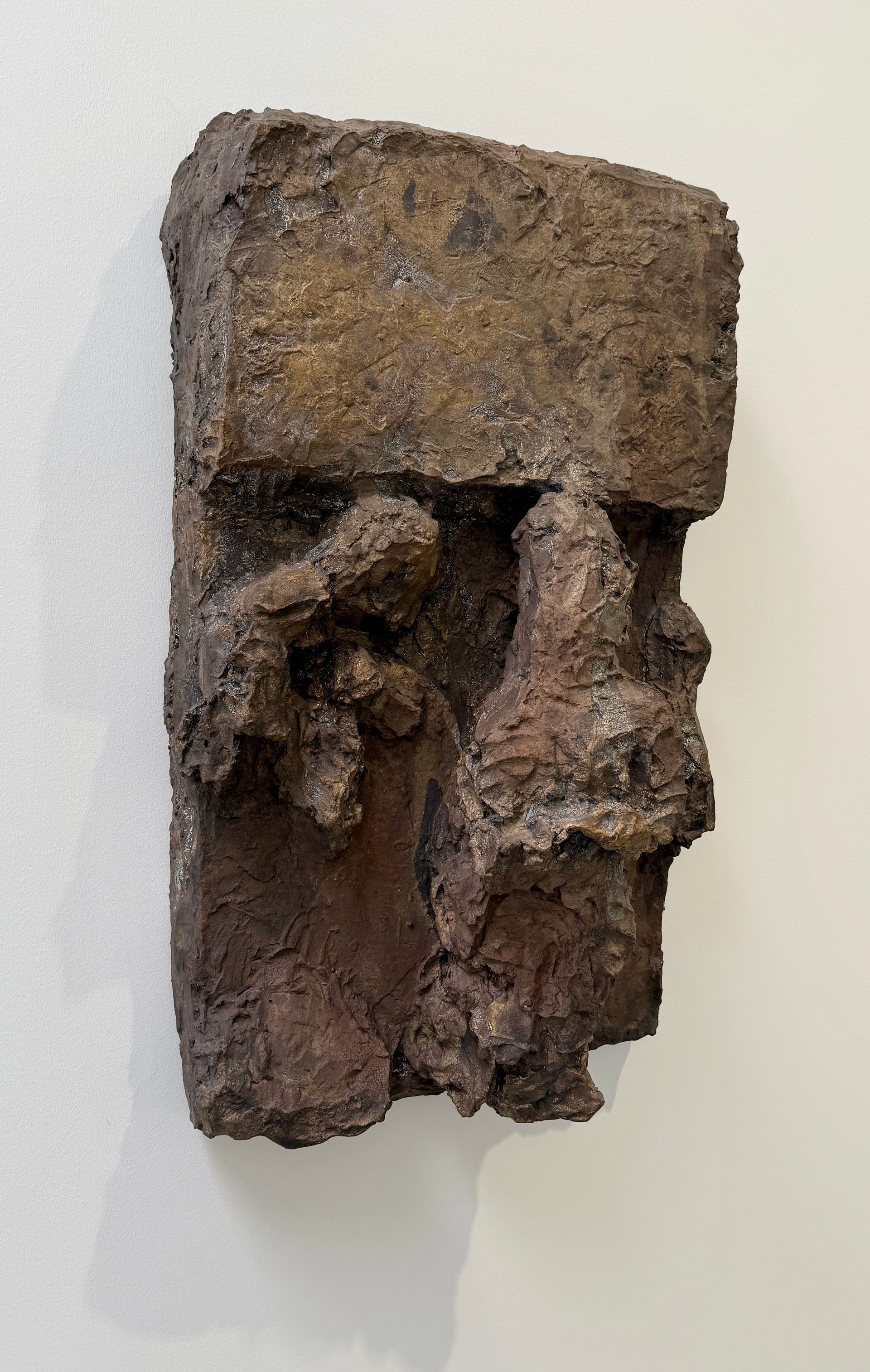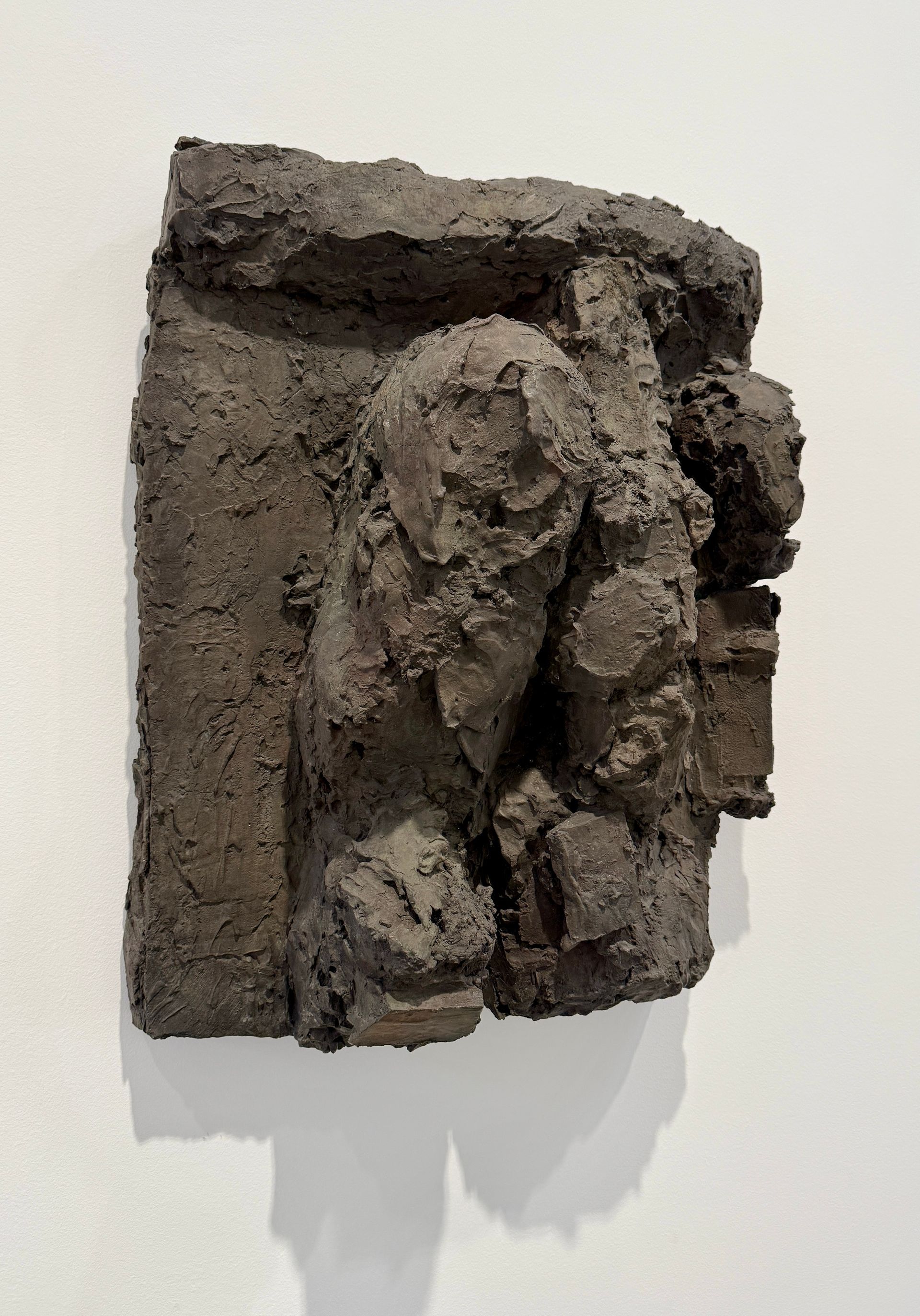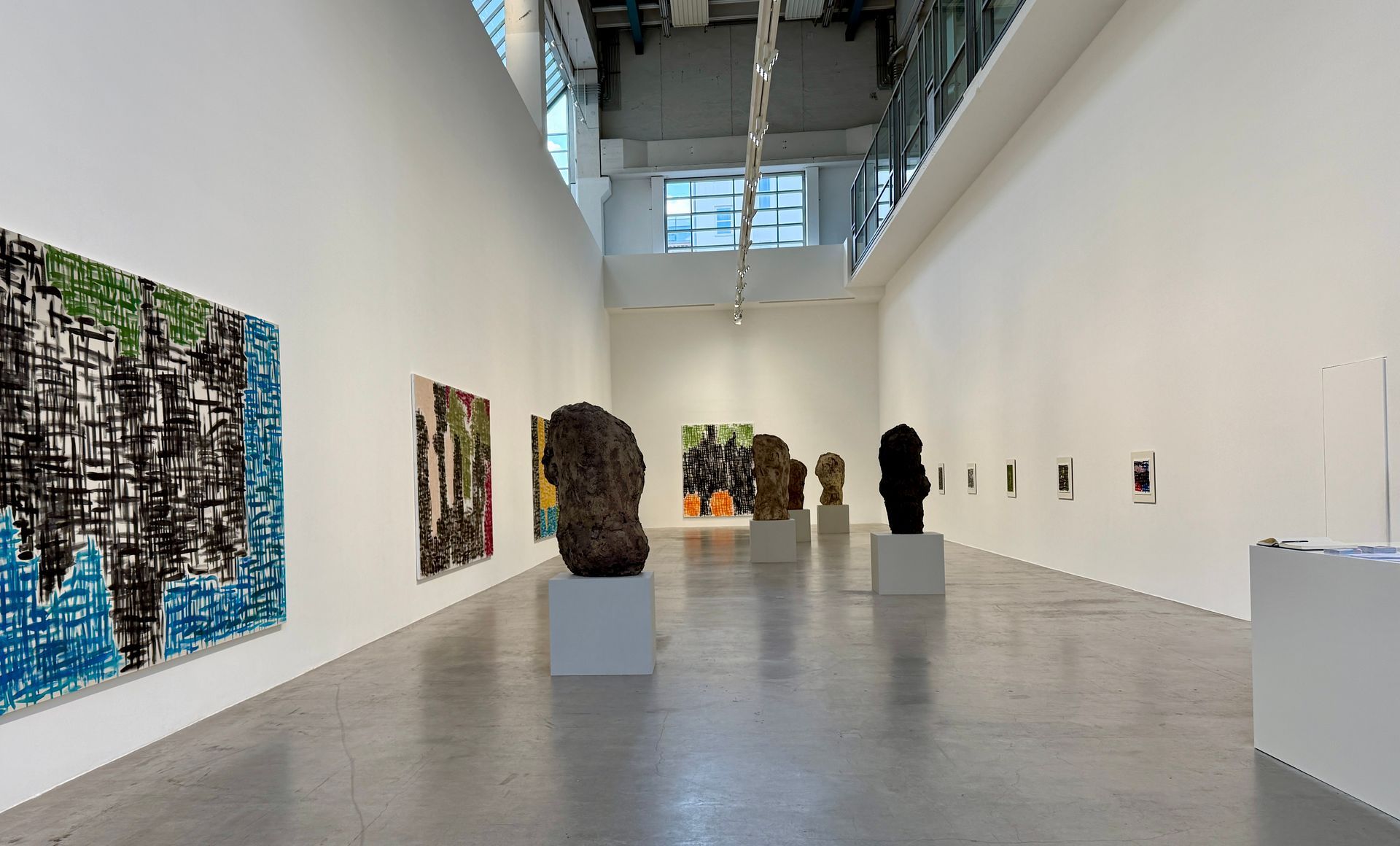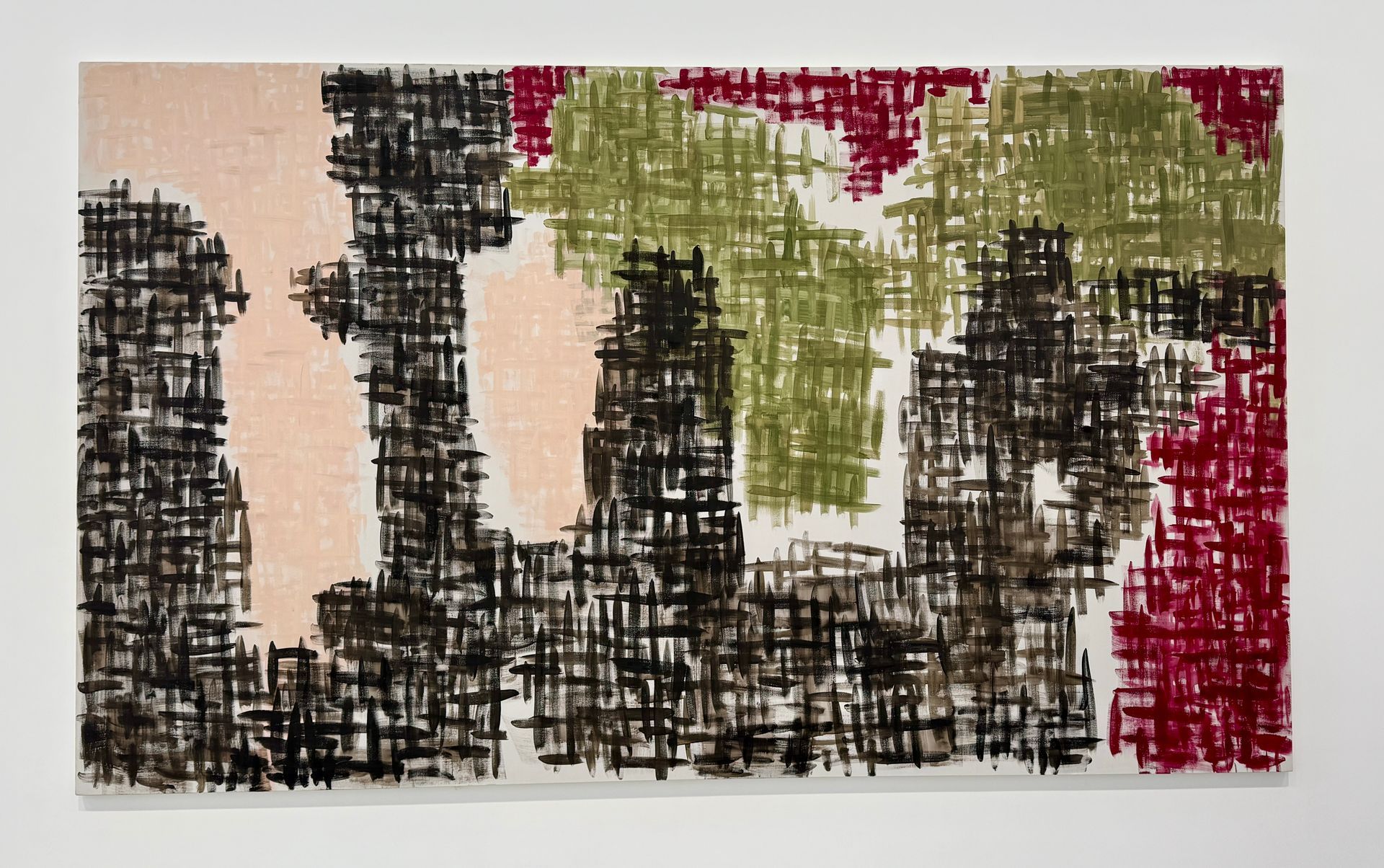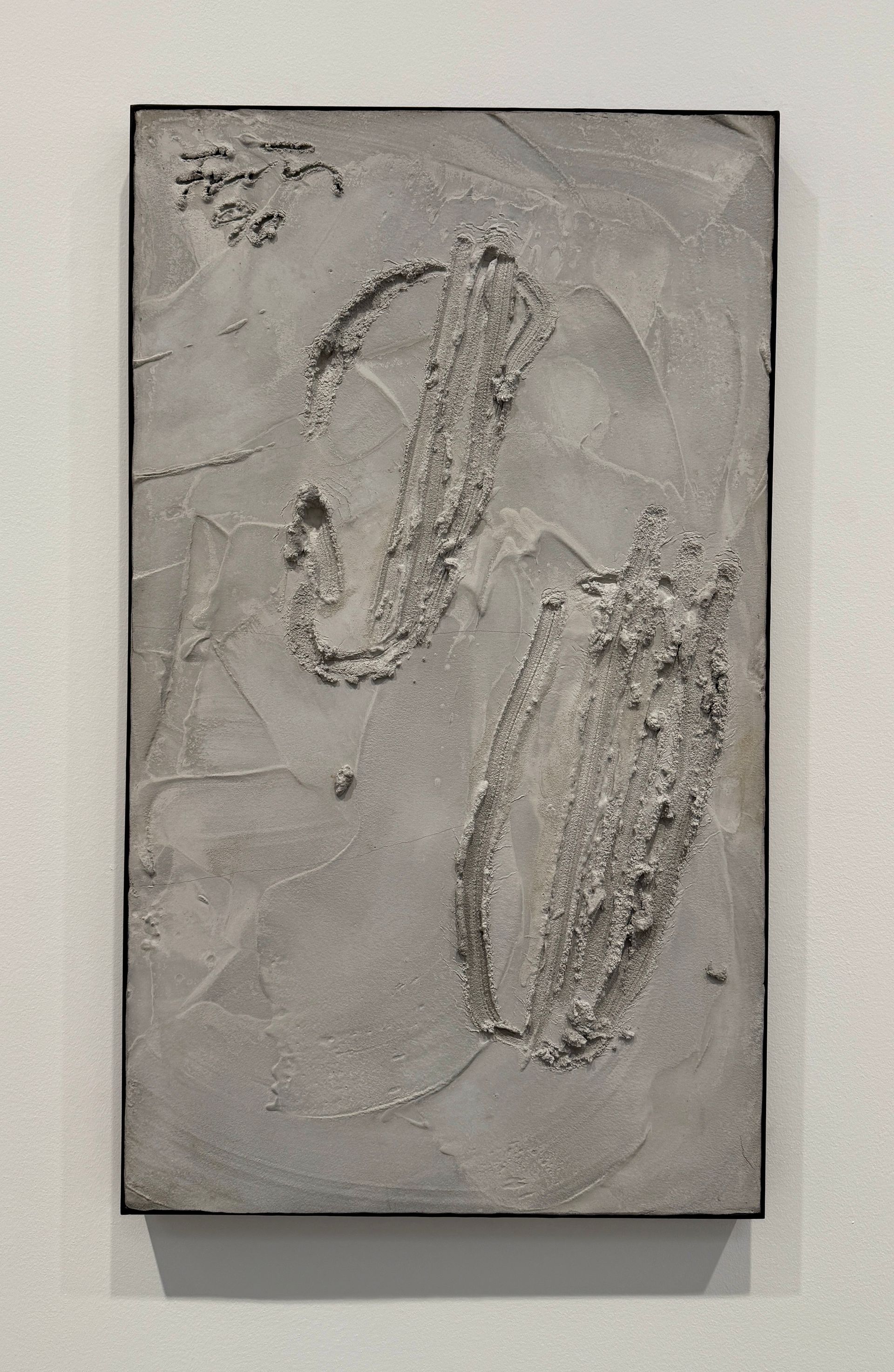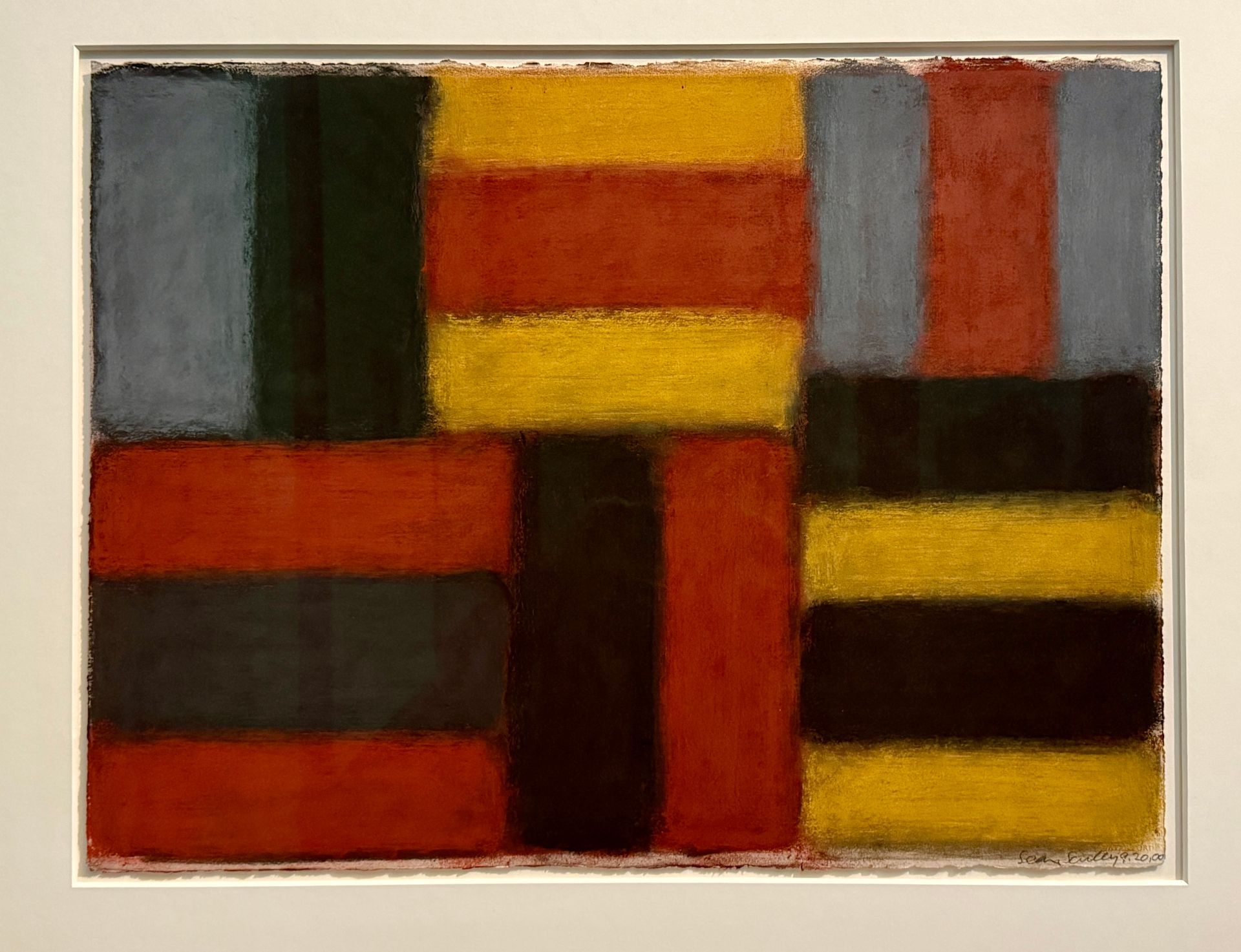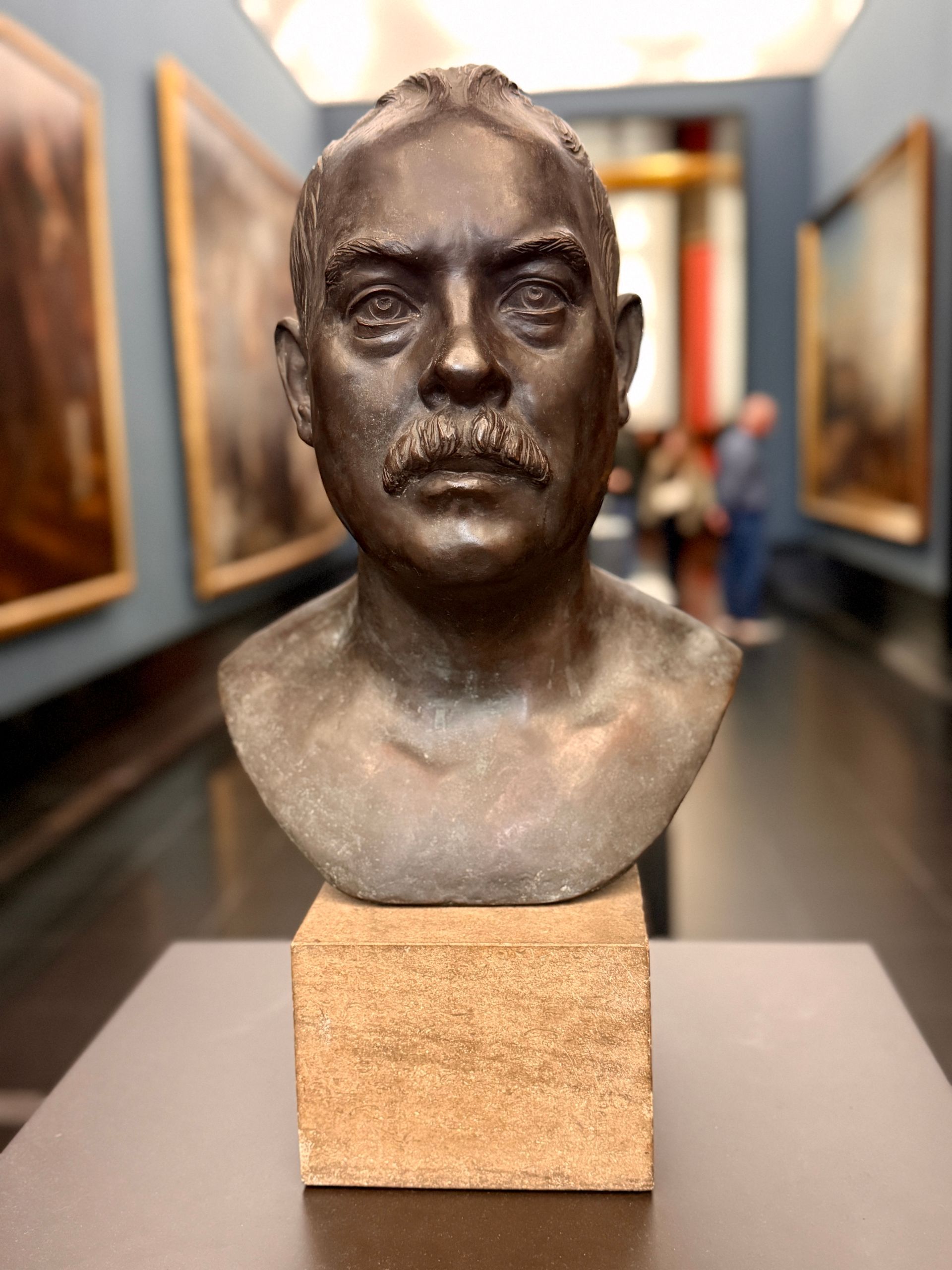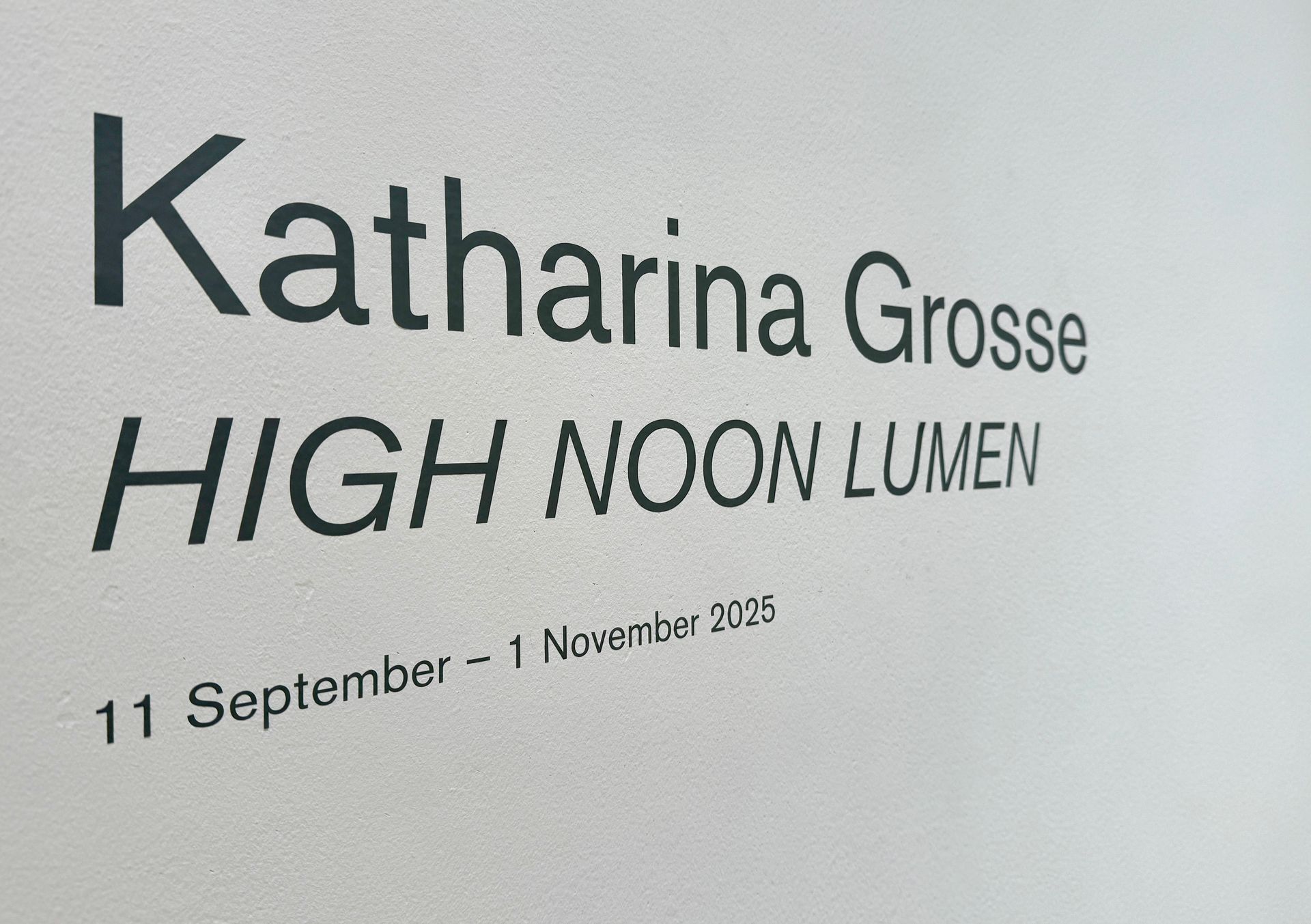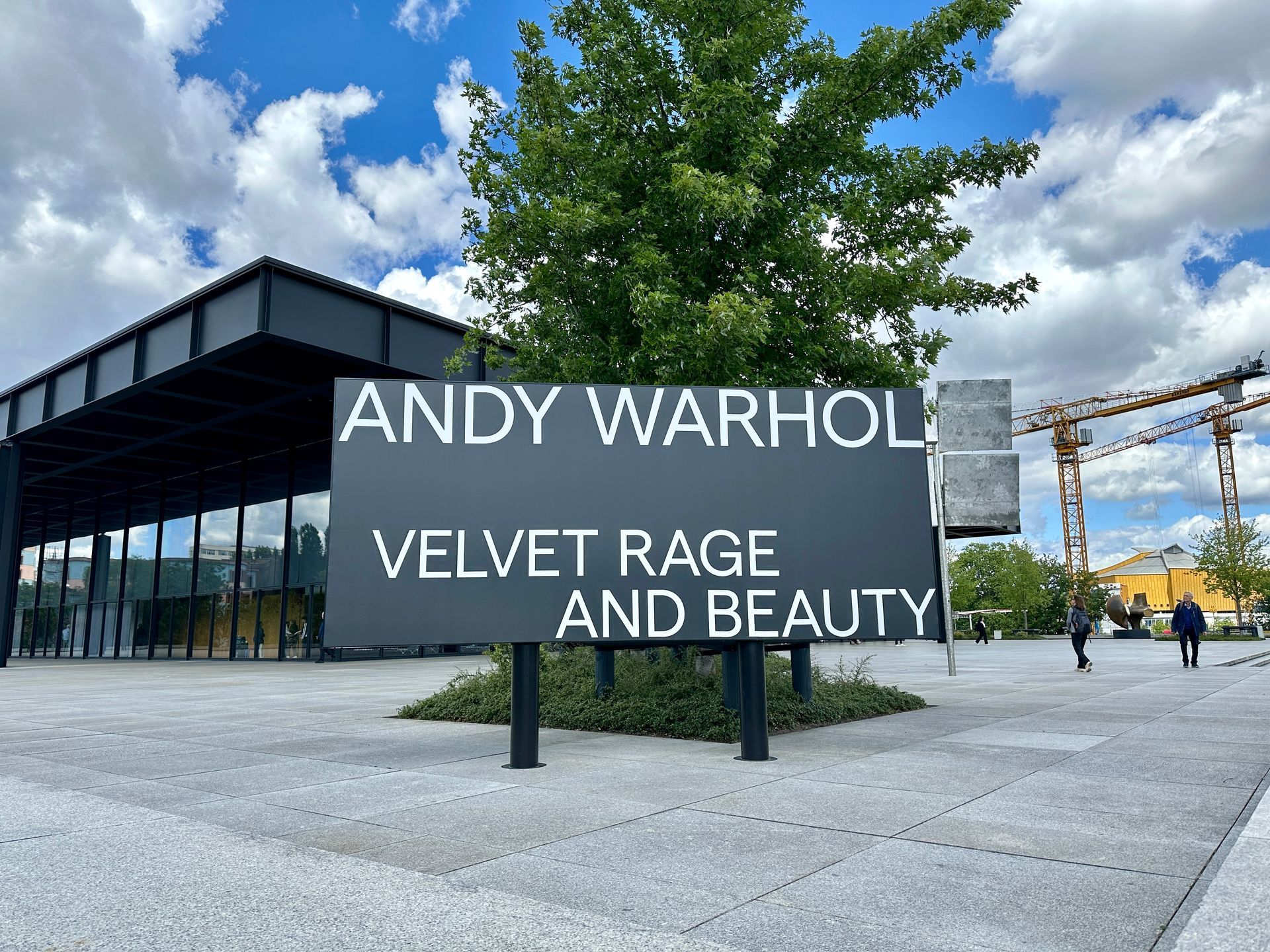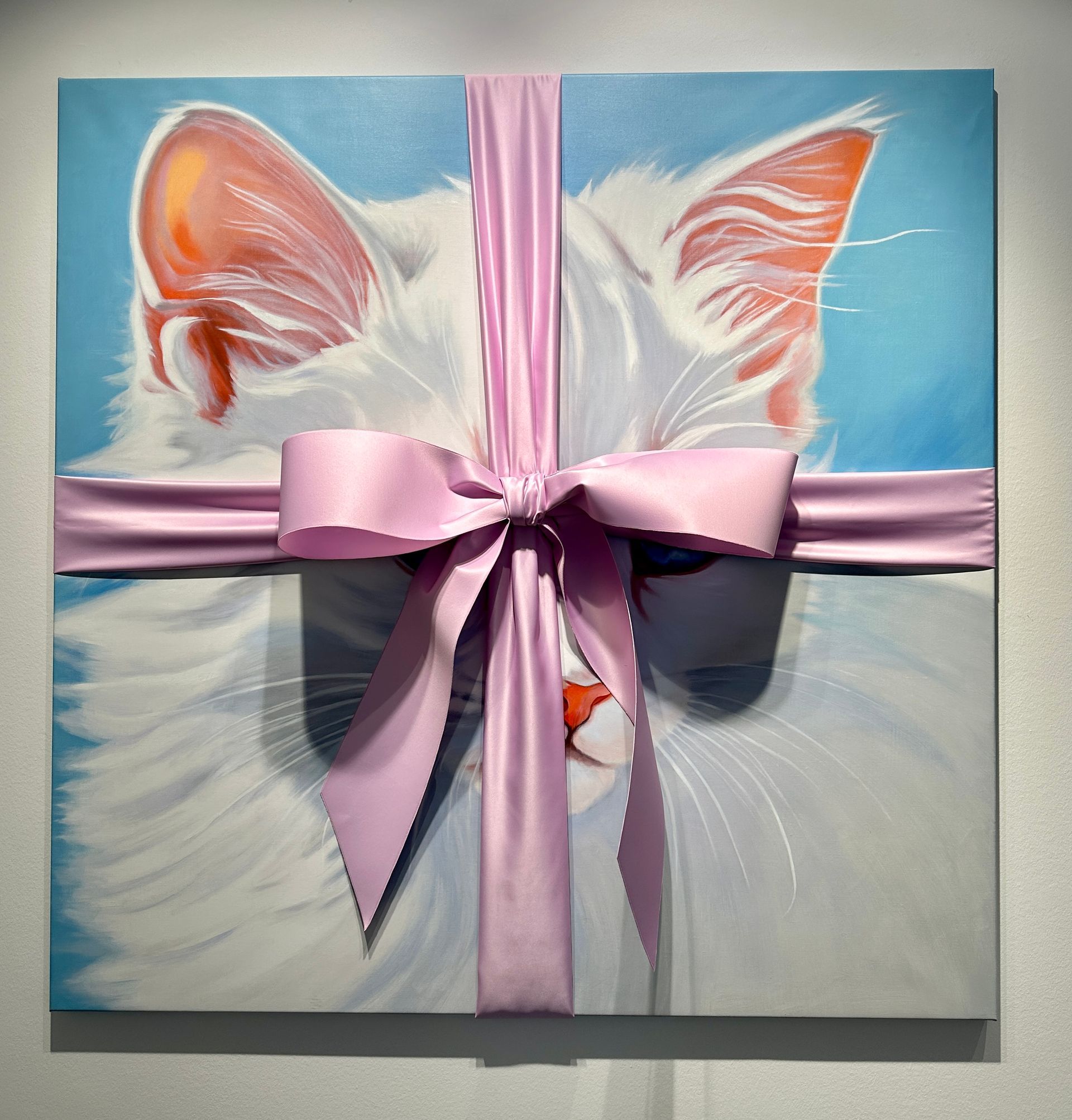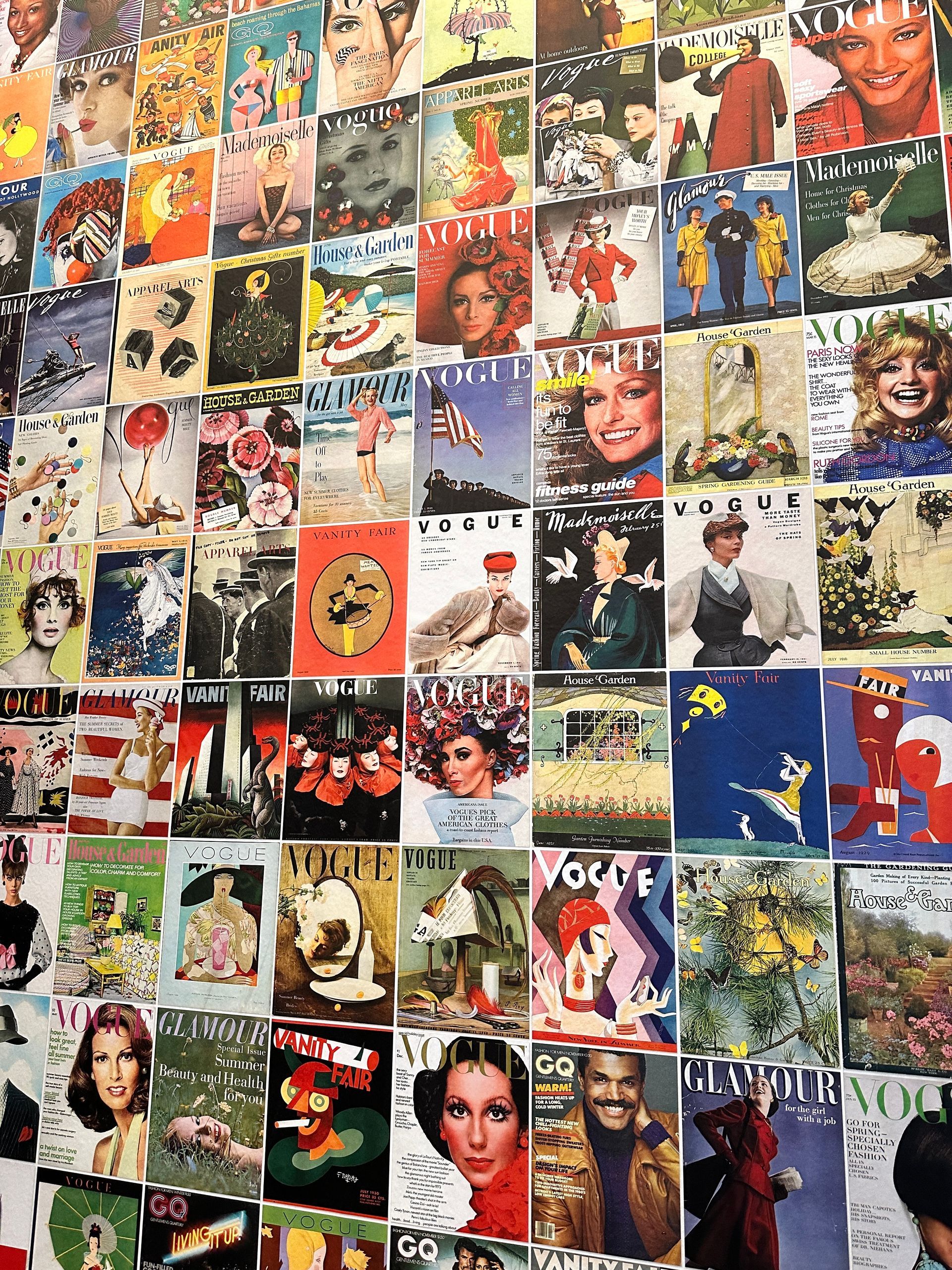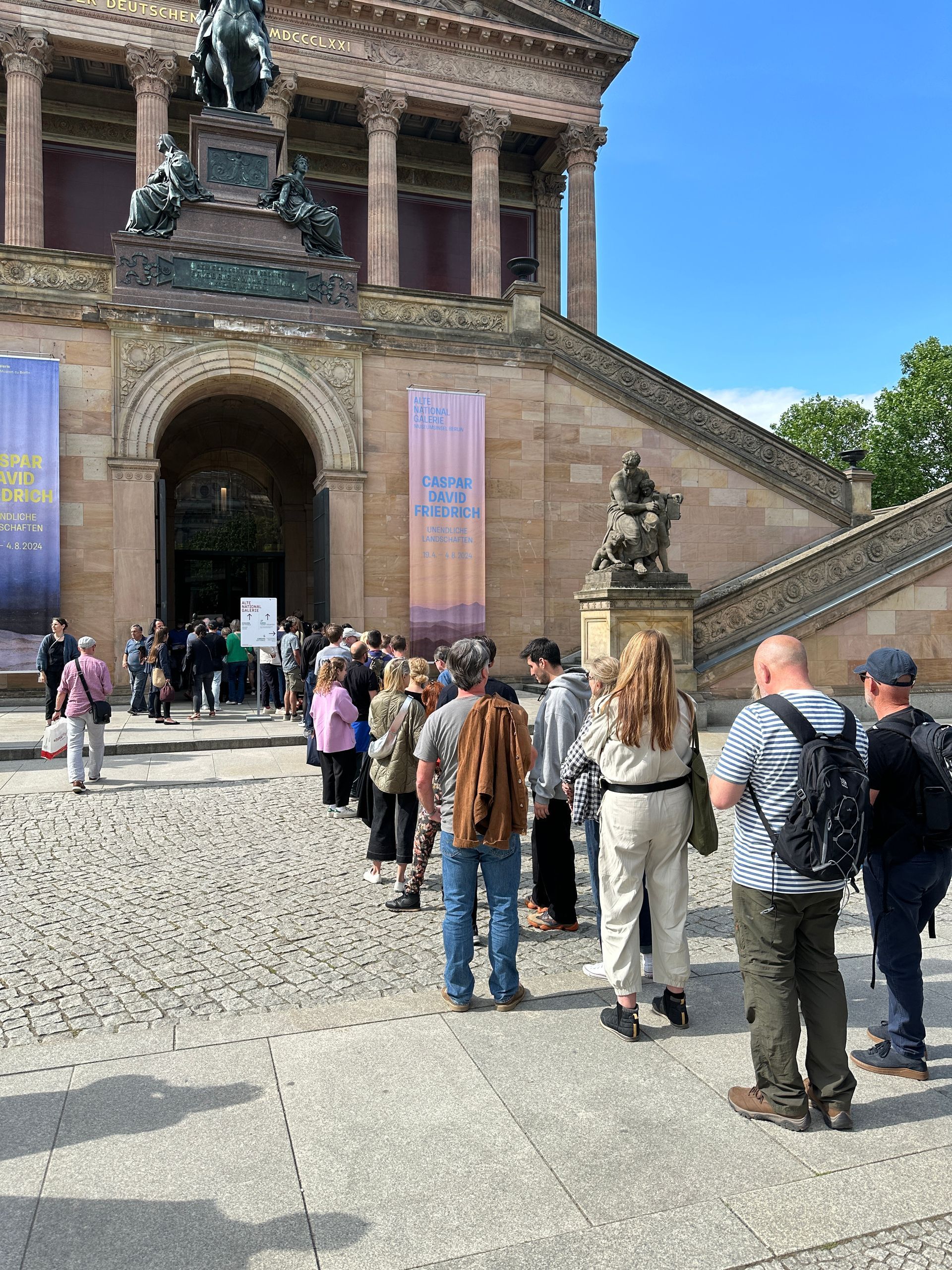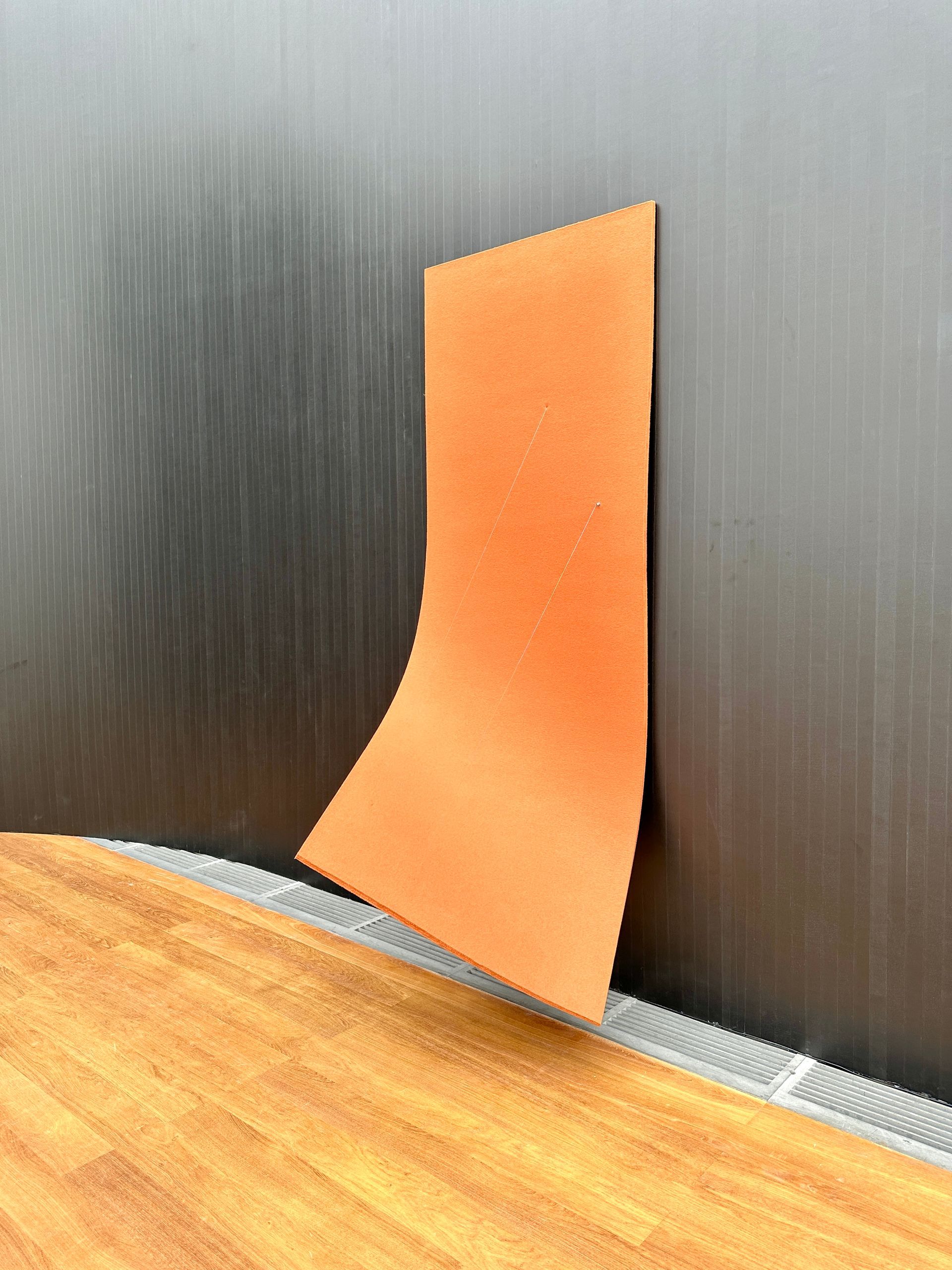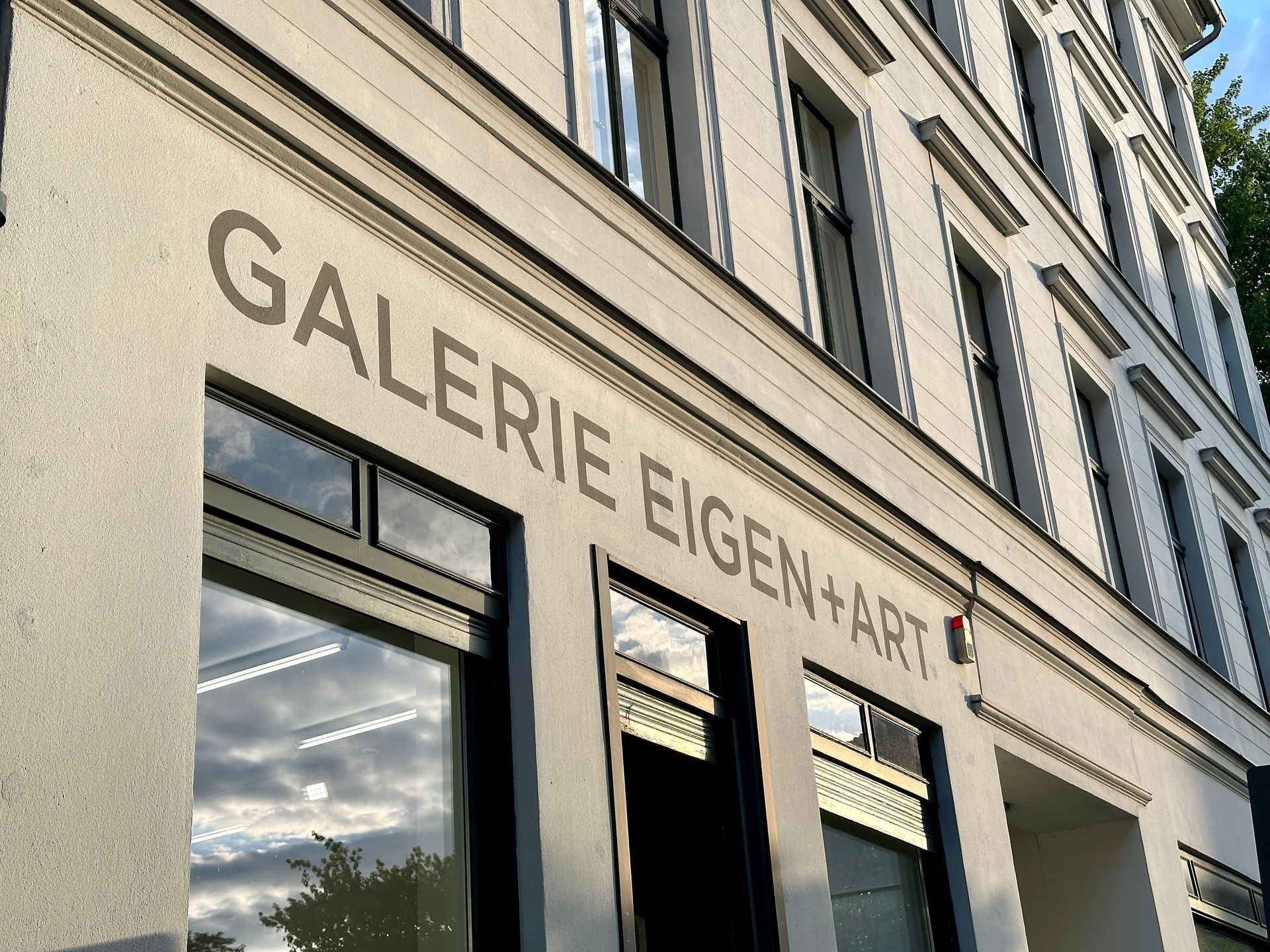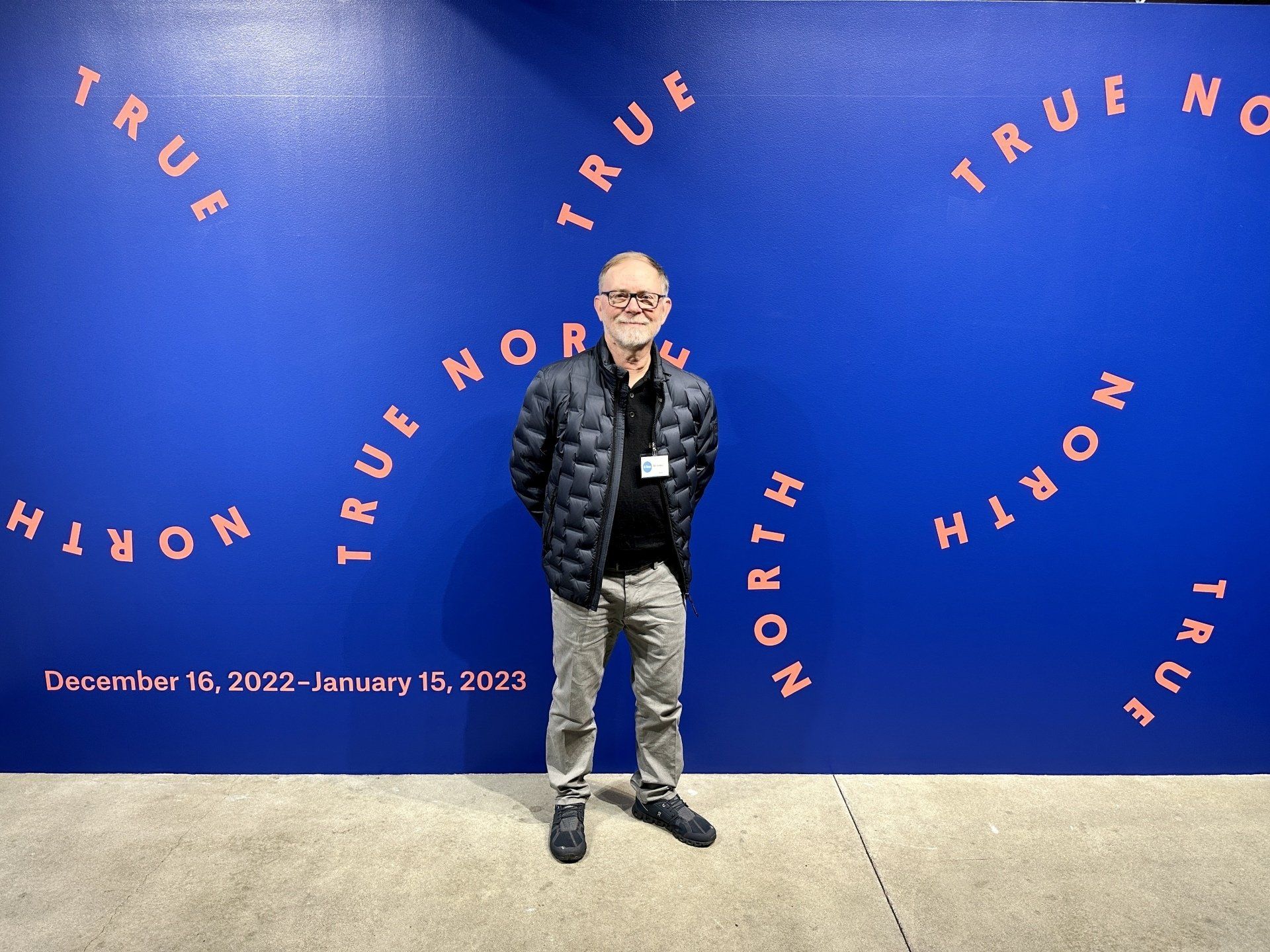Solidity and Openess at Max Hetzler
“Hans Josephsohn and Günther Förg - A Dialogue” is showing at Galerie Max Hetzler’s vast, two-story, museum-scale space on Potsdamer Strasse in Berlin through October 25, 2025.
Large paintings by Förg and imposing sculptures by Josephsohn fill the main hall of the gallery, which is almost the size of an airplane hangar.
The Günther Förg paintings are like sophisticated crazy quilts - patchwork shapes, puzzle-pieced together. The brush marks amount to rhythmic stabs, alluding to the warp and weft of textiles (but not cashmere - more of a scratchy Pendleton wool). The washed out color palette consists of mostly mineral tones. In spite of the constrained brush movements and reticent color, the paintings keep your attention - partly due to the large scale. The interlinking block shapes are intriguing. Although I approached these paintings as abstract pieces, there was one where I couldn’t “unsee” the map of U.S. Not sure if that was the artist’s intent or just a coincidence.
All the large paintings are untitled and were completed in 1995.
Smaller acrylic on wood panel pieces by Förg are lined up on an opposite wall. These clear and clean grid pieces feel more like drawings than paintings. The effect is layered, with the darker grid in front, half-concealing color movements and shapes behind. The front grid is heavy enough to become a barrier between the viewer and the background painting. Even though Förg used a consistent grid formula for the panels, each has a unique feel.
Förg had a relatively short-lived, but expansive career, including photography and sculpture. He died in 2013 at 61.
Hans Josephsohn’s weighty sculptures stand in a staggered formation down the middle of the gallery space. The pieces have a similar scale, mystery, and timelessness to the giant heads on Easter Island. Except these “heads” have been worn down extensively by time. At first, judging from the texture and color of the pieces, I assumed they were ceramic, but each was first sculpted in plaster then cast in brass. The rugged surfaces show Josephsohn’s process of adding and scraping away the plaster. The artist died in 2012 at the age of 92.
The Josephsohn sculptures could be taken as obscured artifacts from the very distant past, or as objects from our own time, as viewed a thousand years from now. The ambiguity is what makes these sculptures so powerful.
These pieces also make a strong impact as silhouetted shapes - like the monumental profile of El Capitan.
The only aspect of these sculptures that I had doubts about was the flattened bottom of each piece. Although the flatness made it possible to seat them on pedestals, I thought it might have been better to have the pieces set right on the floor. Try picturing the Easter Island heads on pedestals - much more powerful rising directly out of the earth.
On the second floor the exhibit continues with smaller works by both artists. Most interesting were what I’m calling “sand drawings,” by Förg. They look like drawings made in wet sand; however, they are made of concrete. The pieces vary from grid form to curvy calligraphy. Also interesting are the smaller, wall-mounted sculptures by Josephsohn. They follow a similar theme as the large column figures on the first floor, except these abbreviated pieces portray not just one figure, but a dimly visible narrative. The subjects have been almost complete worn away by the erosion of time (millennia?). The pieces are so dark that the viewer has to allow time for eye adjustment in order to actually see the forms that emerge from the wall - time well spent.
